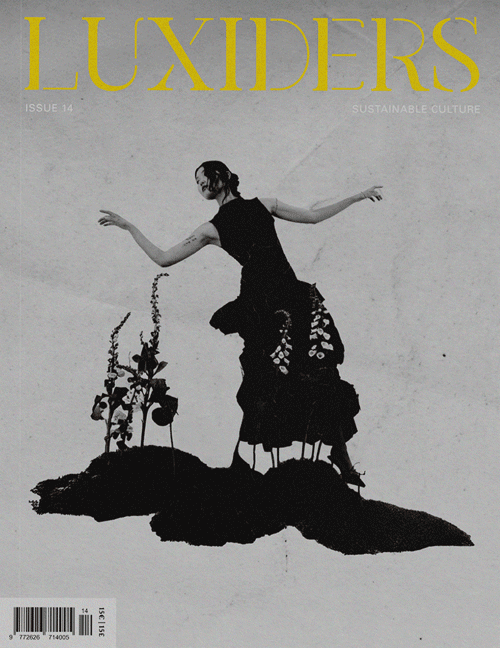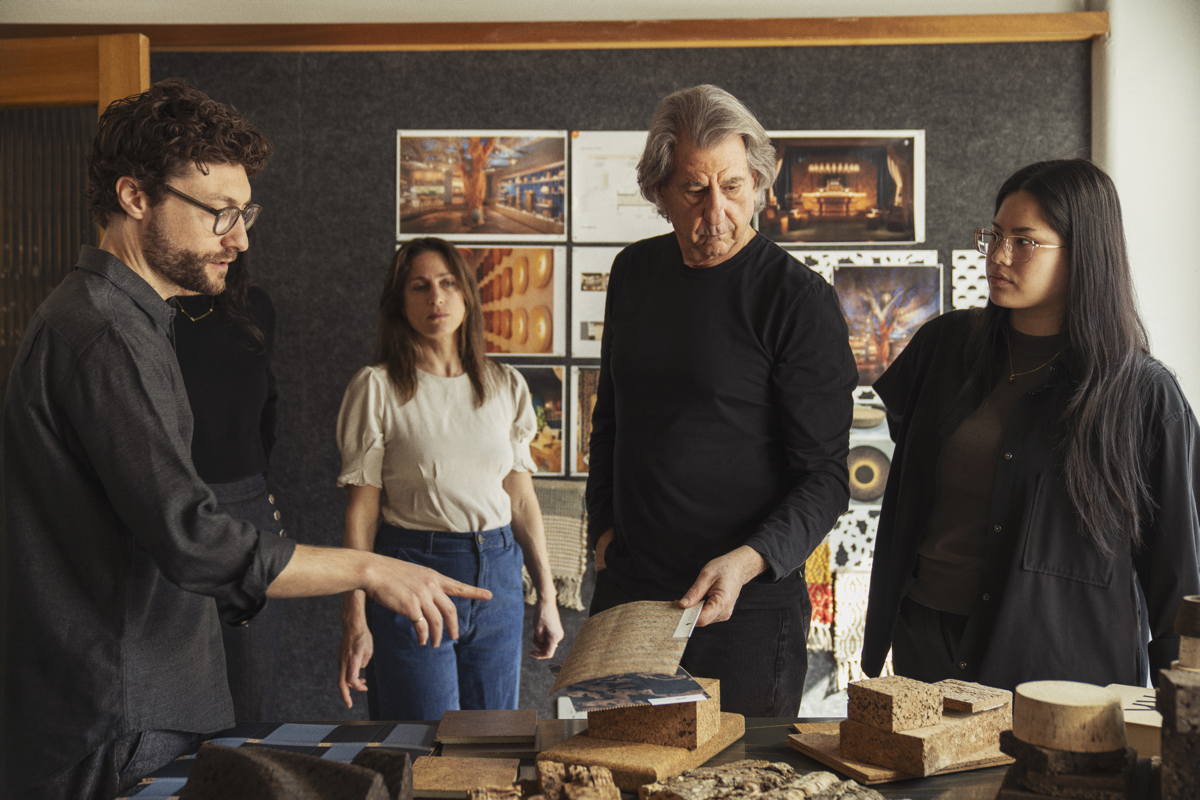
10 Questions with David Rockwell: On Sustainability, Innovation, and the Future of Design
In this exclusive interview, Rockwell opens up about the role of materials like cork, the urgent need for adaptable spaces, and how design can evolve to meet the environmental challenges of our time. He shares the inspiration behind Casa Cork, insights into sustainable practices at Rockwell Group, and what the future of responsible architecture might look like. More than a conversation about design, this is a reflection on how creativity, ethics, and innovation can shape a better built world.
From Broadway stages to luxury hospitality spaces, David Rockwell has long been celebrated for transforming environments into stories. But with Casa Cork, his latest project showcased during Milano Design Week, Rockwell is pushing the narrative further—into the realm of sustainability, adaptability, and circular design.
Your work has always been at the intersection of architecture, design, and storytelling. How do you define sustainable design in today’s world?
Of course sustainable design involves many components, from healthy, sustainable products that are good for the environment and human beings, to construction and design processes that reduce waste. With cork, you have an example of nature’s perfect product: Cork oak trees are not felled or damaged in the process of harvesting, where the bark, or cork plank, is carefully removed. Every nine years, the bark, which absorbs and retains large amounts of CO2, regenerates and can be extracted again. After its initial use as, say, a wine bottle stopper—cork’s primary application—the buoyant, impermeable material can be recycled, its carbon sequestering ability still intact.
But more broadly, when we think about sustainability at Rockwell Group, we think about durability and audience. Will a project be enjoyed and used for a long time by a lot of people? Does it possess the capability to transform and be repurposed over time? Can it be adapted? Adaptability is a huge piece of sustainability. We are always excited when we get to work in historically important buildings or landmarks—or even just mundane spaces that were something else before they were the site of a new project. We get to re-use and repurpose valuable resources as well as benefit from the patina of time.
Your latest project, Casa Cork, will be showcased at Milano Design Week. What inspired you to work with cork, and what story does this project tell?
We’ve been interested in cork for a long time. We previously developed a cork wallcovering collection called Porto with Maya Romanoff, years before the Cork Collective was even a spark of an idea. It was inspired by our obsession with cork, even then, and its incredible range of aesthetic properties and applicability in the built environment. We saw it as a sustainable, flexible product that was an exciting and versatile material for a wide range of hospitality environments.
Fast forward to the last couple of years, in thinking about ways in which we could be better sustainability stewards, we were shocked when we learned that 13 billion cork stoppers worldwide are thrown in trash. With our deep roots in the hospitality industry, we felt called to try to galvanise our community around an educational and recycling campaign that would open people’s eyes to cork’s incredible transformative properties and potential because it can be recycled over and over again.
Cork Collective’s New York City Collection Program launched in Summer 2024 in collaboration with 70+ local restaurants, hospitality venues, and wine stores. The recycled cork will be used for neighbourhood playground surfaces and public spaces.
We also wanted to grow the program internationally, and when it comes to wine and design, we felt that we need to have a footprint in Milan and Italy. Simply put, Casa Cork is a hospitality experience to showcase cork design innovation. We wanted to ignite people’s curiosity and sense of discovery around this material and we felt that an immersive, hands-on journey, in collaboration with some incredible designers and craftspeople, was the way to go. Interiors, furnishings, and lighting are crafted nearly entirely from cork. We wanted to choose objects and materials that further reveal the versatility and beauty of cork, while also displaying the R&D process. We hope designers are inspired to think differently about cork and other sustainable materials.

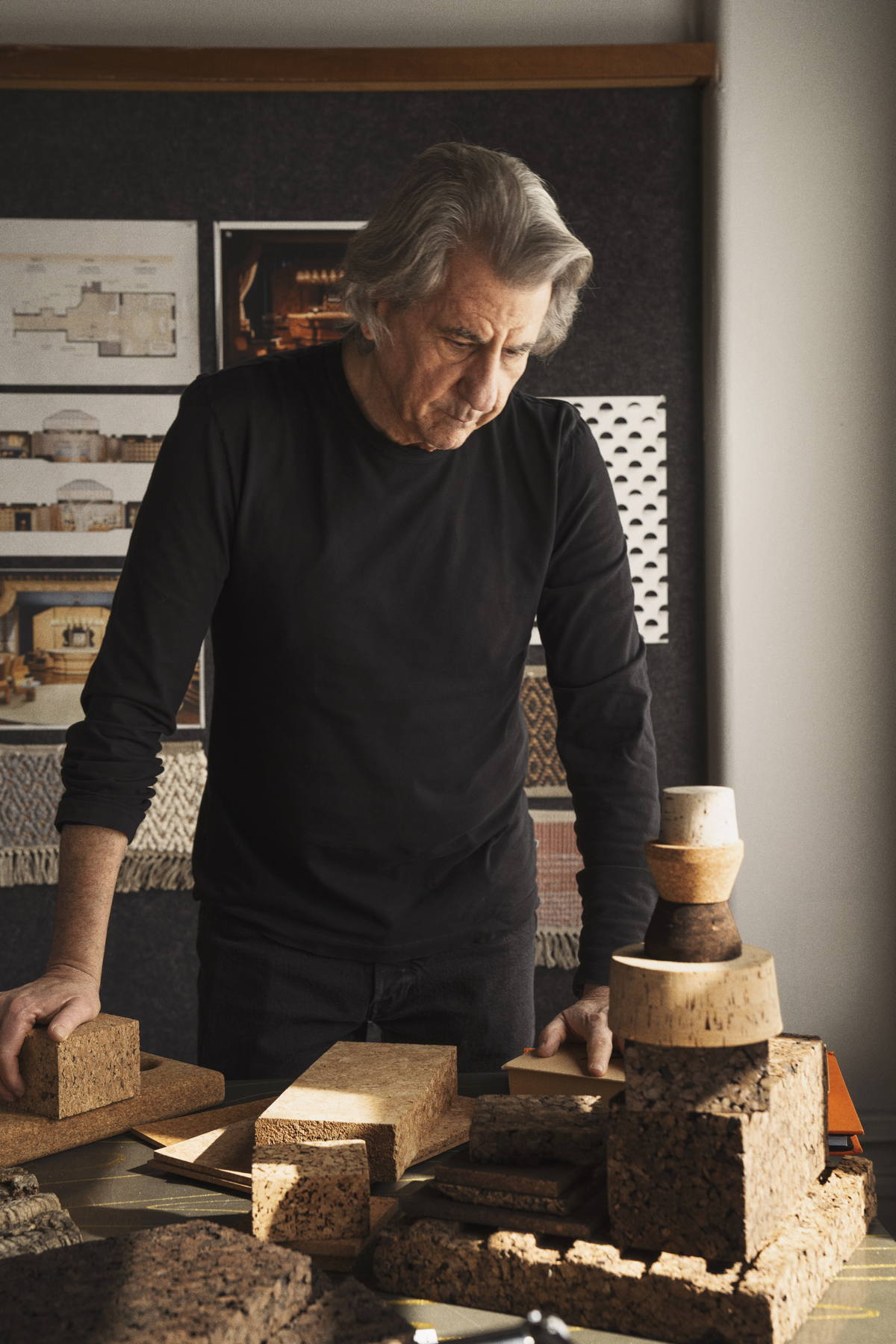
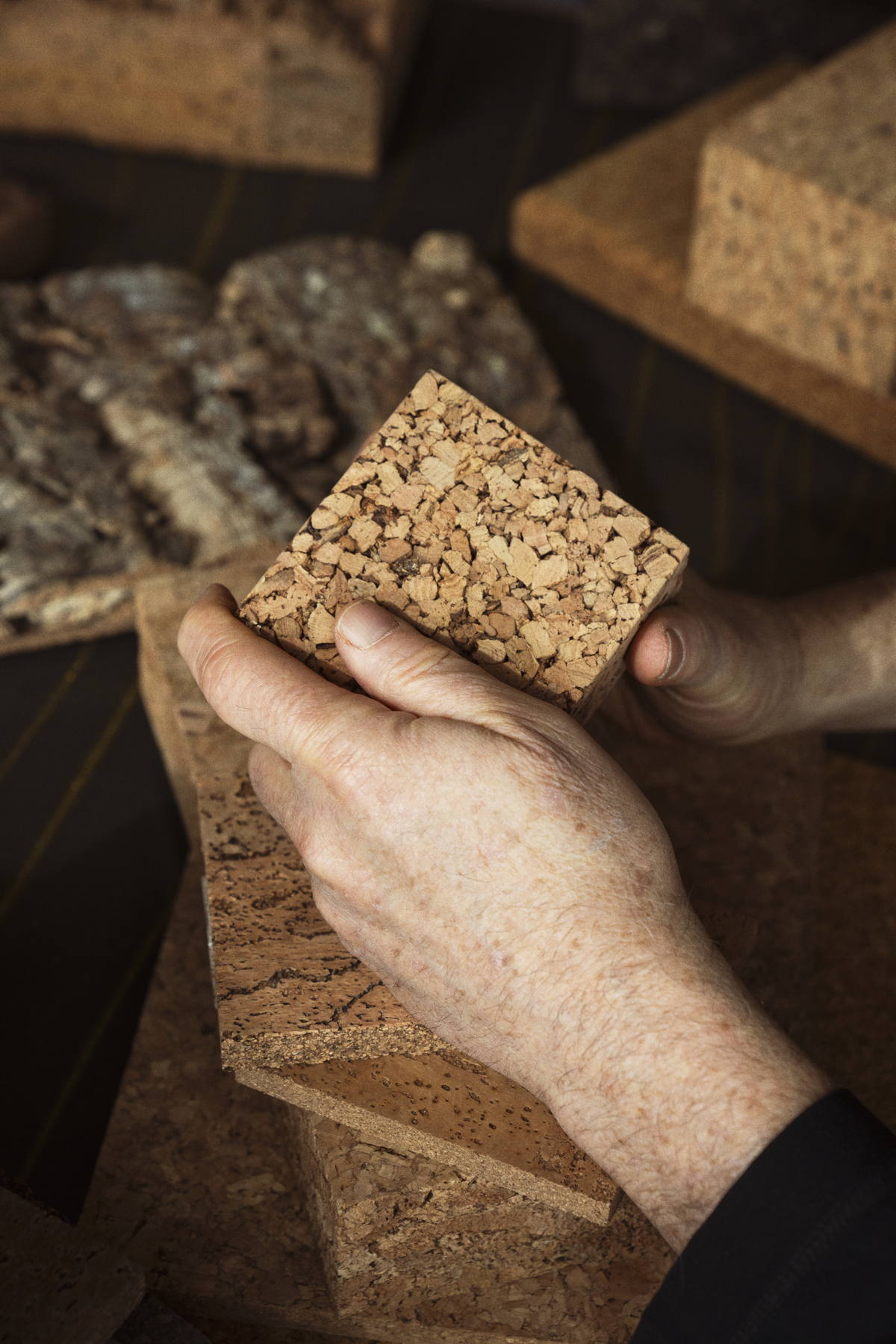
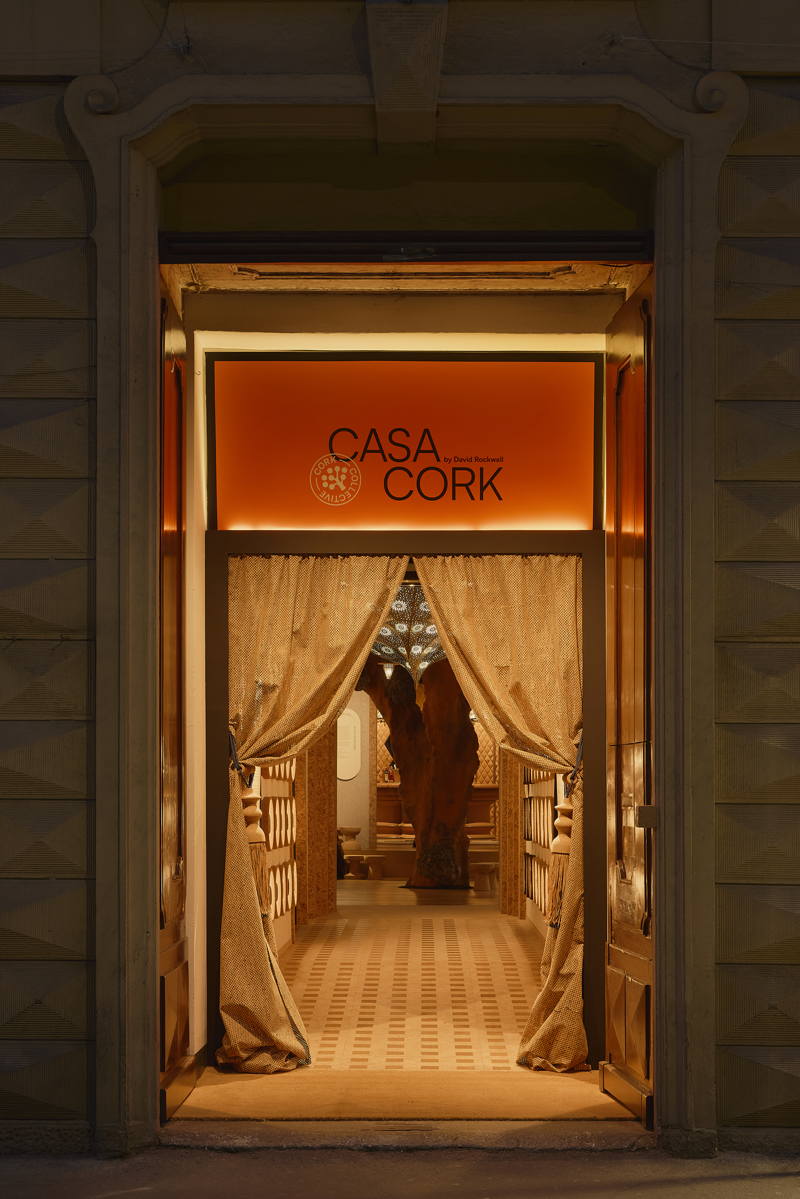
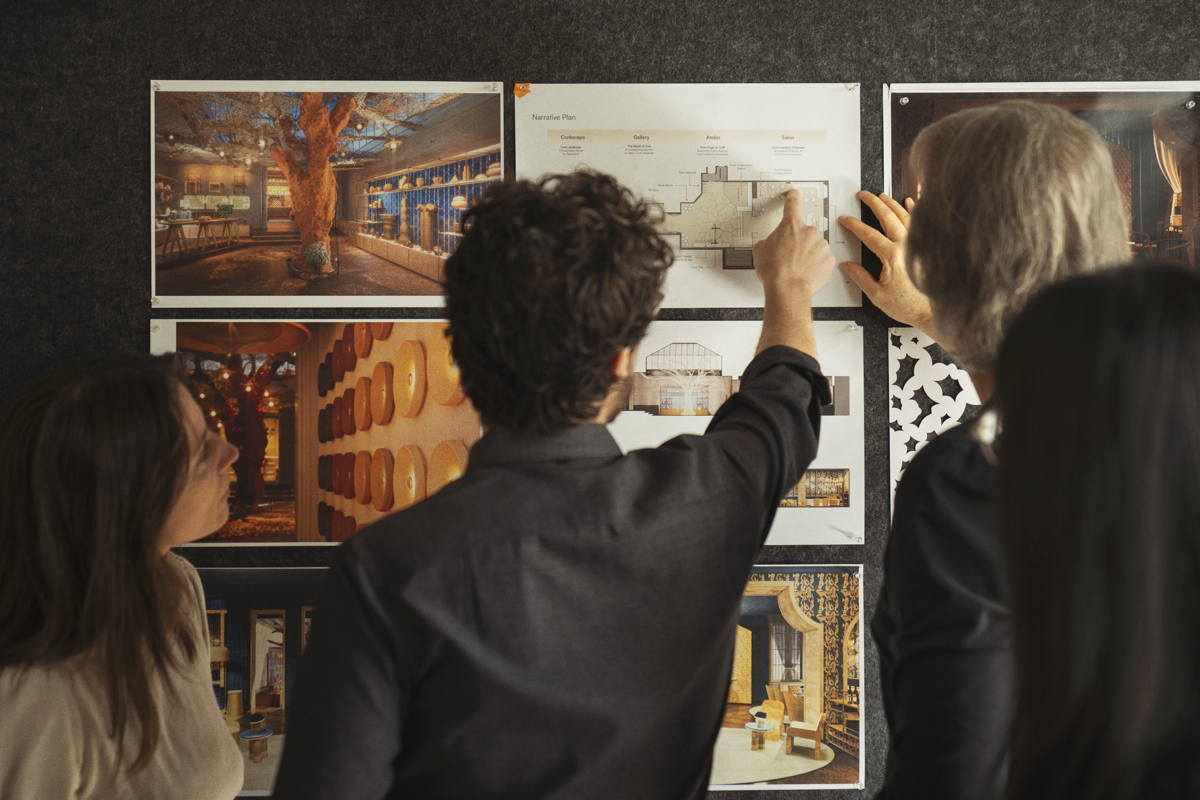
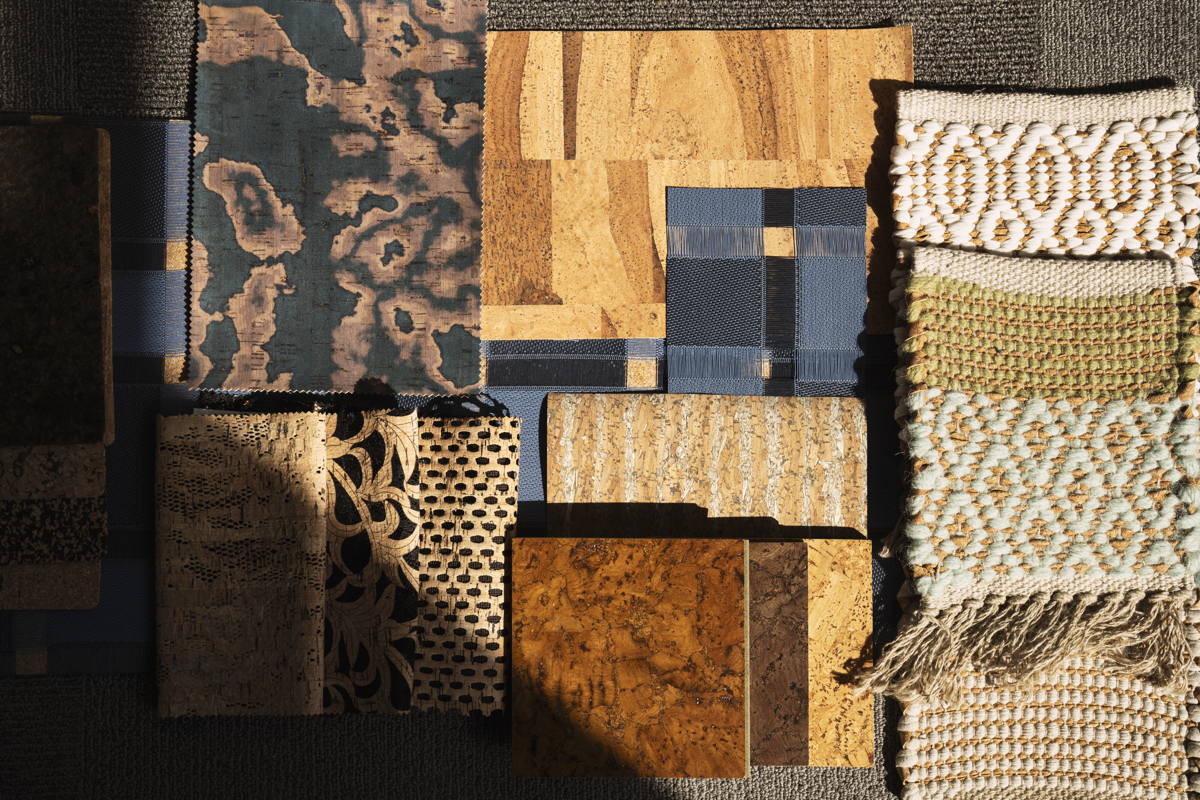

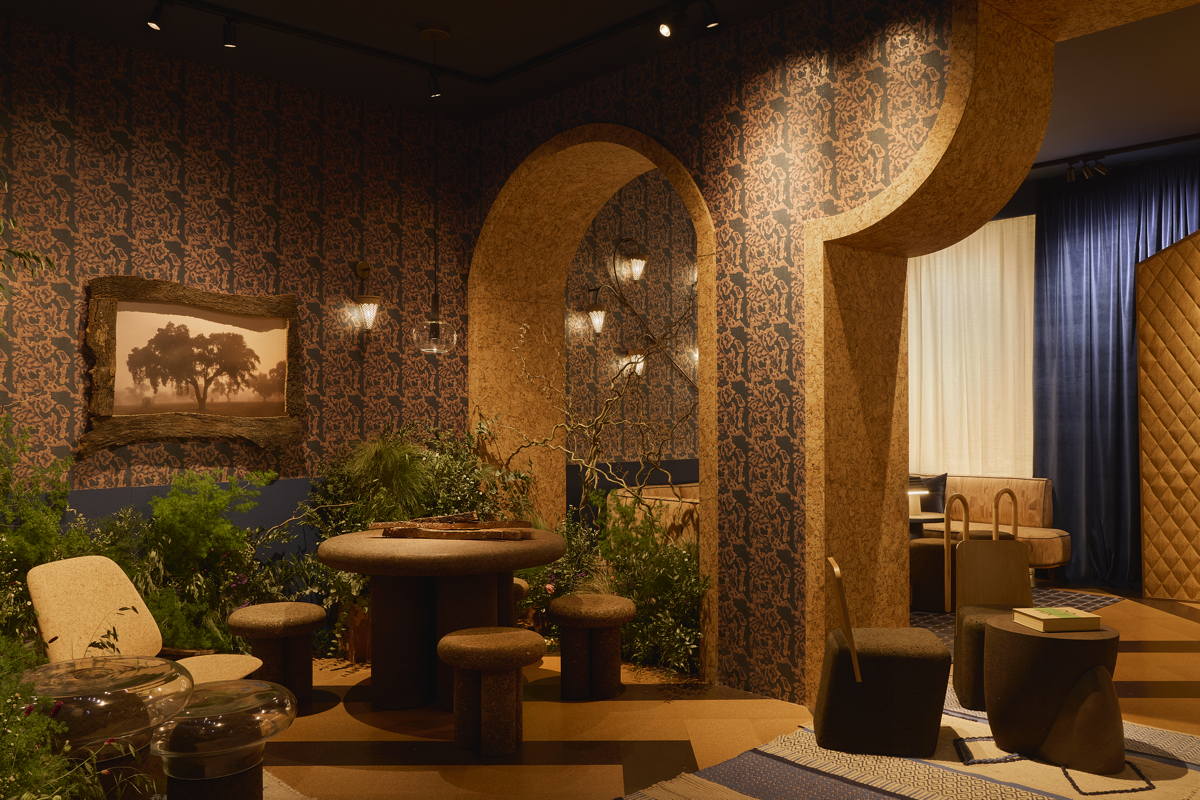
THE POWER OF STORYTELLING IN ARCHITECTURE
We have read Casa Cork is an exploration of sustainability and adaptability. Do you think this project represents a larger shift in how we will design homes in the future?
A lot of people have been thinking about how to design more sustainably for a long time; for example, there are now designers experimenting with Hemplime, a carbon negative biocomposite made from a mixture of lime and hemp hurds, the core of industrial hemp plants, for carbon-neutral building insulation. I hope that with Casa Cork and the Cork Collective, we are another source of provocation— another voice asking if something can be done a little bit differently for the health of our planet and ourselves.
How can the principles behind Casa Cork be applied on a larger scale, whether in urban developments or commercial spaces?
With Casa Cork, we are creating an element of surprise and delight—turning what is thought of as a mundane material into beautiful, functional objects and finishes that are durable and recyclable. What’s been done at Casa Cork can absolutely be transferred to a residential or commercial setting. We also hope that it inspired designers, owners, and developers to think about a wide range of other sustainable materials and how they can be employed in new and inventive ways.
Sustainability in design often comes with challenges. Were there any unexpected obstacles or breakthroughs during the development process?
A main challenge is designing something reusable. With any project intending to travel, detailing is extremely important at every stage of the development process to ensure each component can be easily demounted and portable.
There are always challenges with research and development when experimenting with a new material, particularly with such a short lead time for production. Cork wasn’t a material our local fabricator had much experience working with before, so this project really allowed us to take risks.
Can you share some details about the materials and techniques used in the project to ensure a low environmental impact?
Much of the cork is from Amorim, which uses either recycled cork stoppers or upcycled off cuts from their cork stopper production. The Parsons students will be working with recycled wine cork stoppers from Amorim, who are fabricating their prototypes. Suber Design and Amorim Cork Italia are providing recycled cork material to Politecnico and will be fabricating the finalists’ prototypes.
Casa Cork features a large replica of a cork tree, which is clad in virgin cork reclaimed from trees that had fallen due to disease or lightning storms. The installation itself is designed and built modularly so we can pack it up and travel to different cities. We are currently exploring future locations now.
Cork used for installation:
• Approx 200 cork blocks of various densities
• ~ 200 meters of rolled cork goods of various densities
• ~ 270 sqm of cork flooring
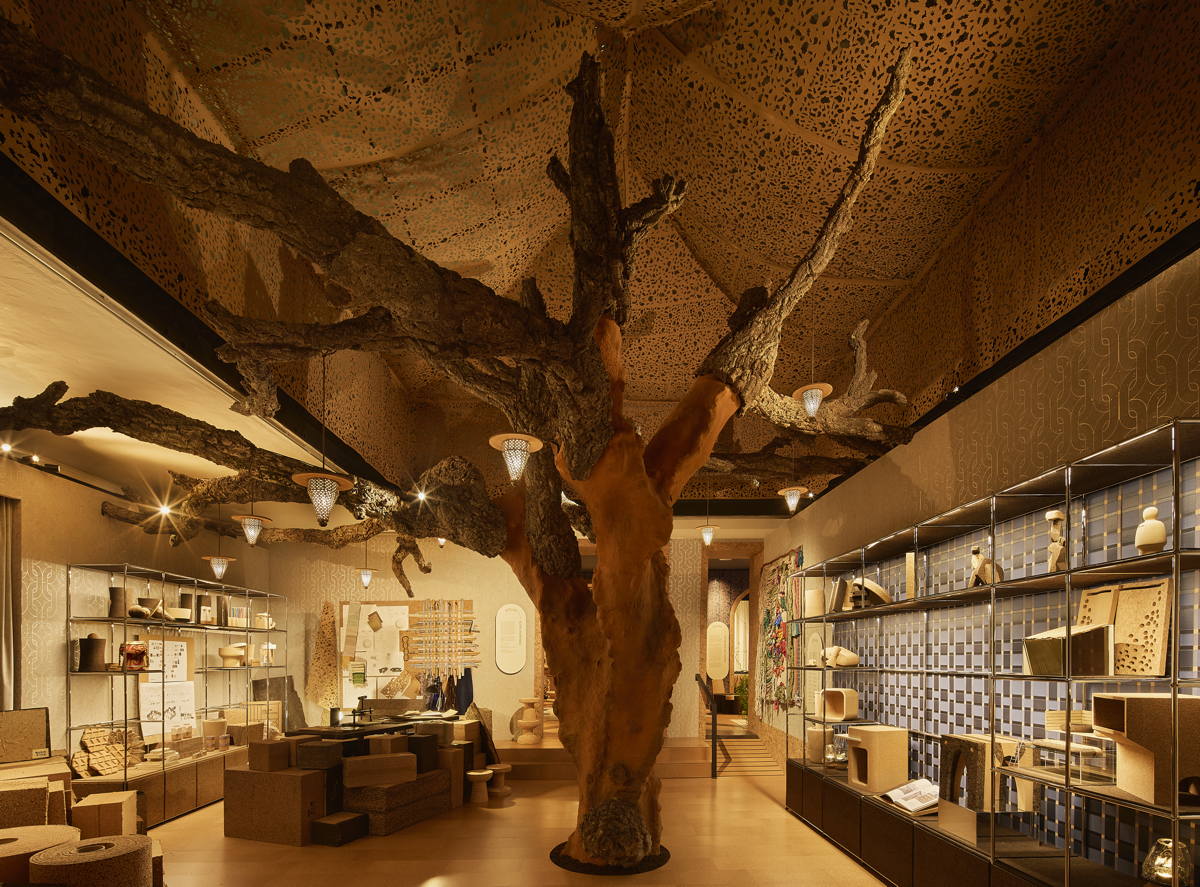

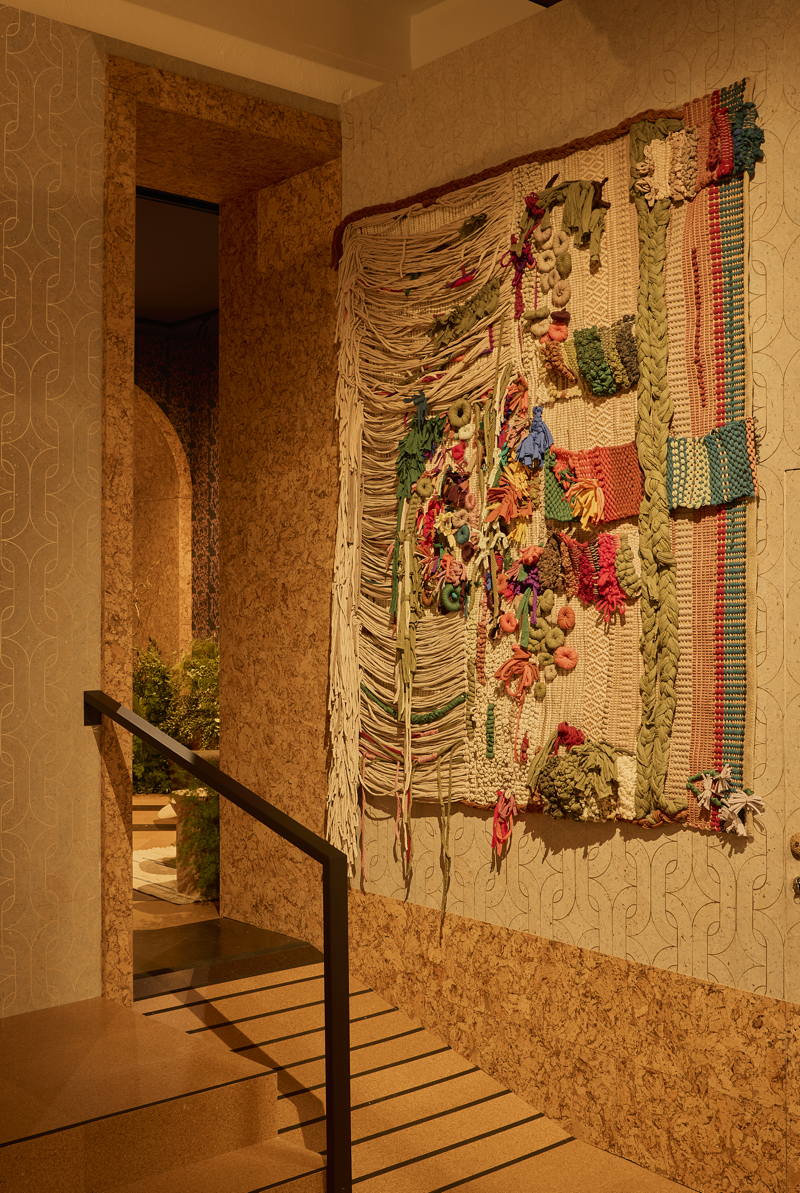
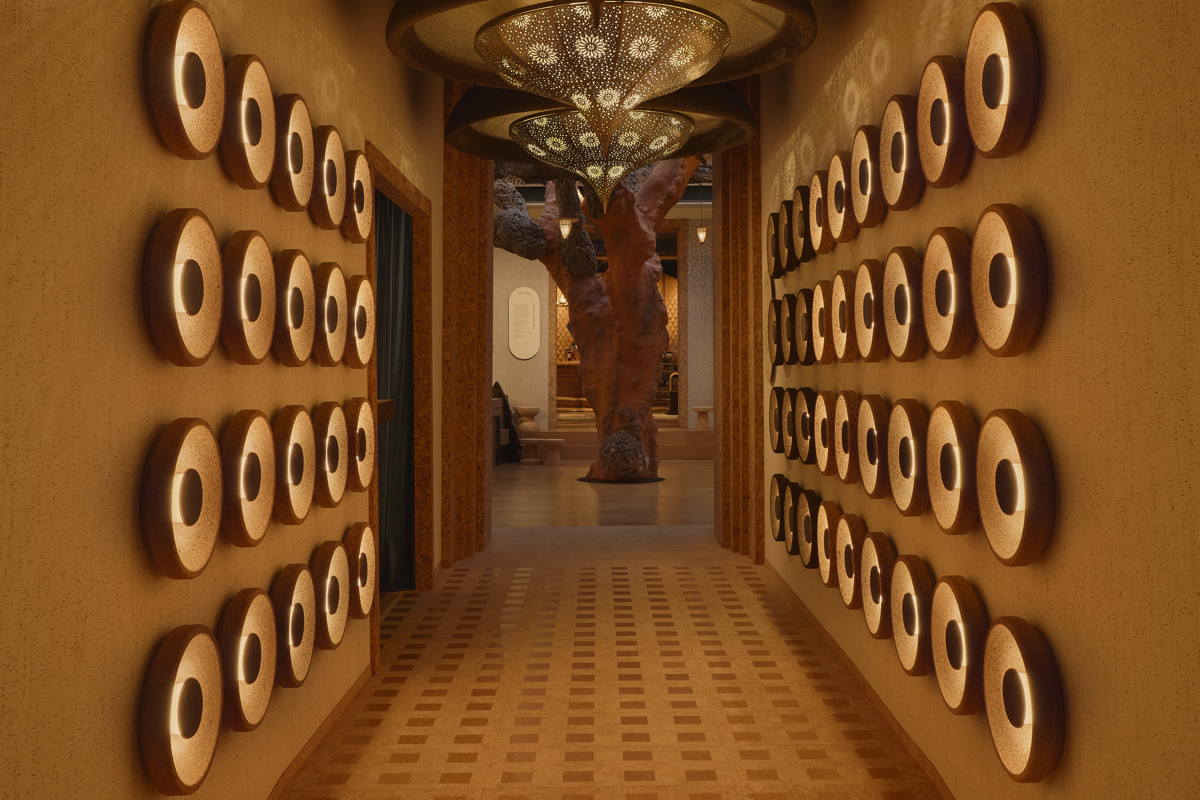
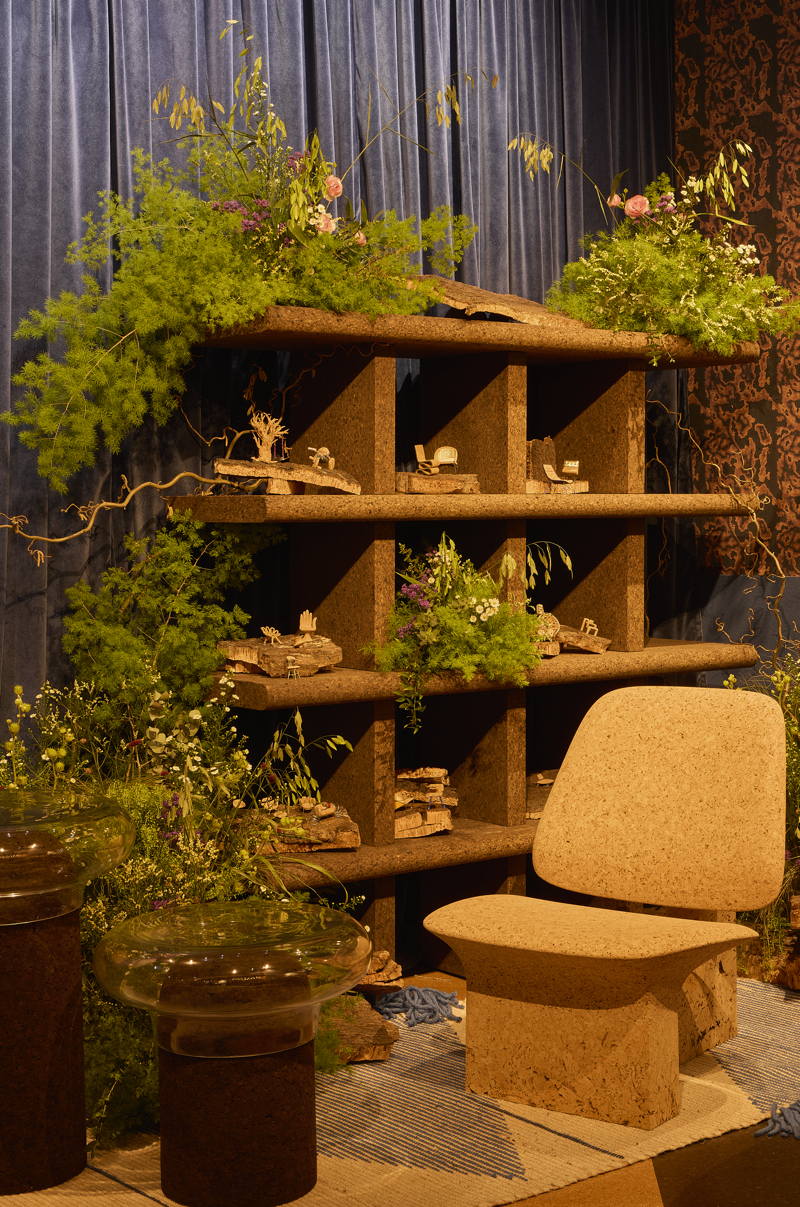
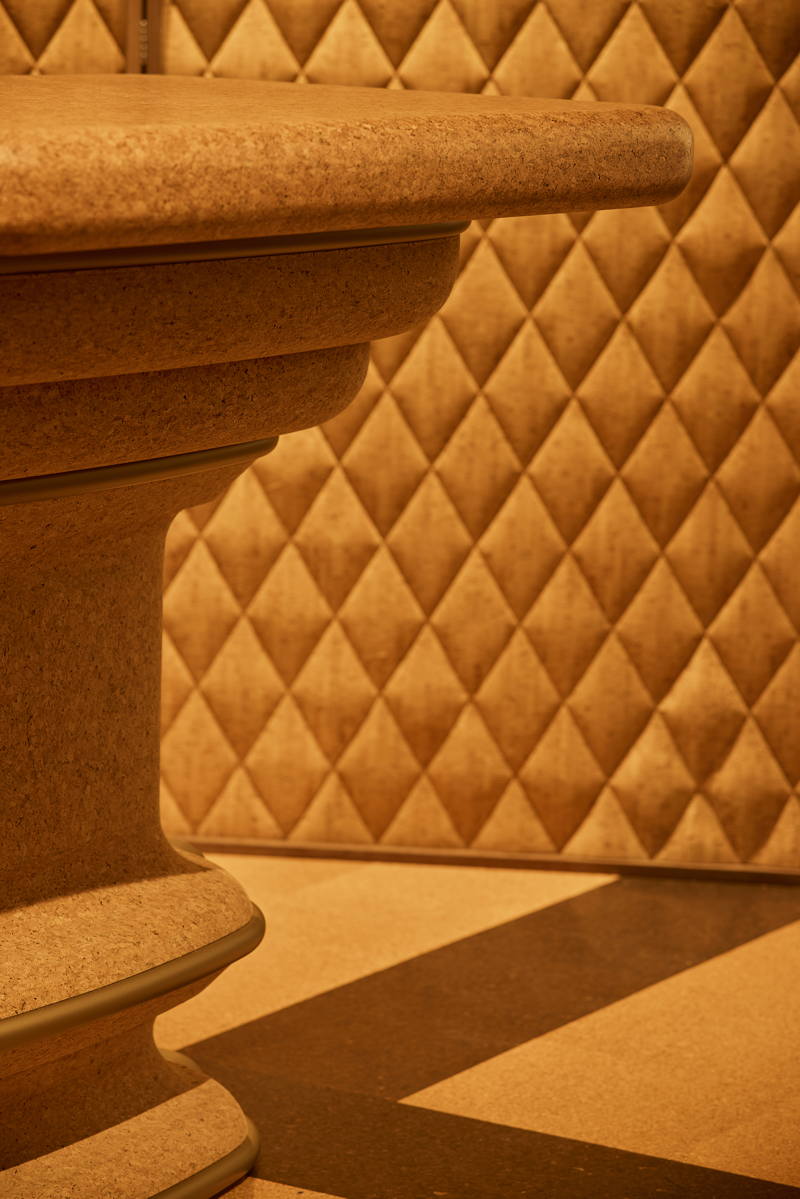
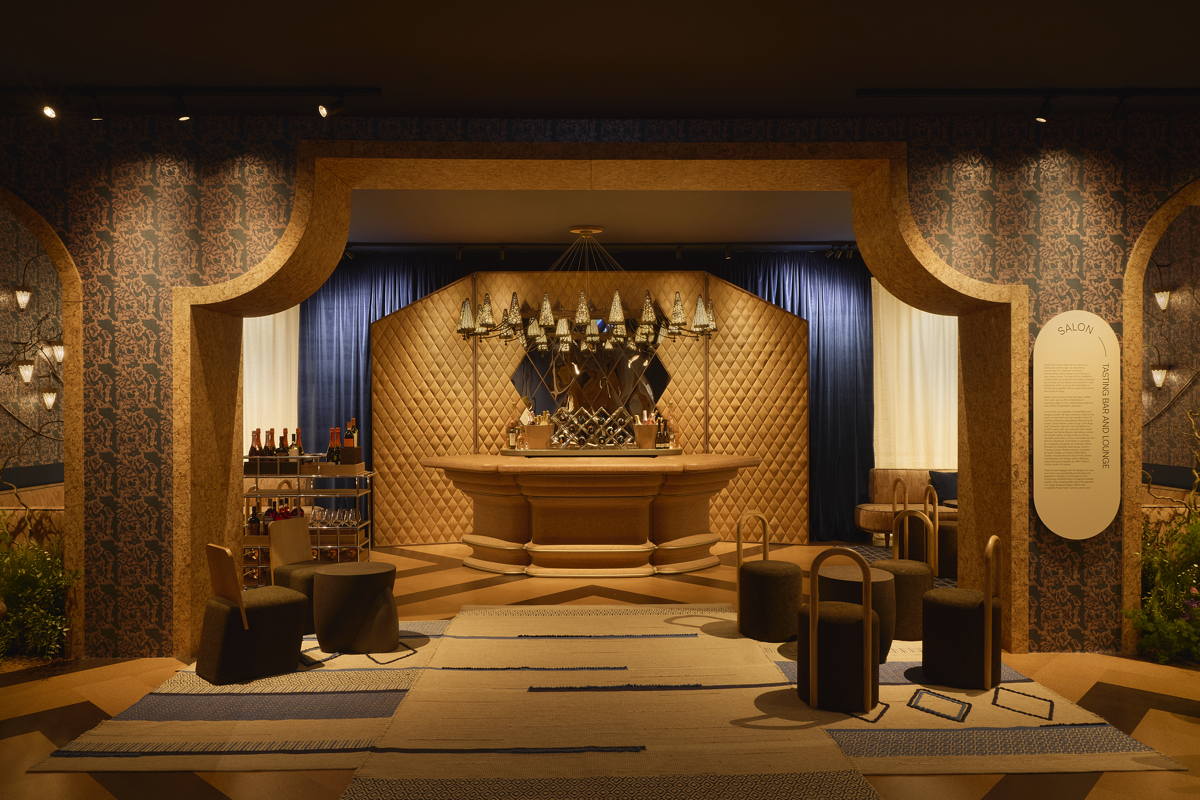
INSPIRATIONS AND VISIONS
Who is inspiring you right now in the realm of sustainable design? Are there any architects, designers, or movements you admire?
There are a growing number of design practitioners and architects making strides in sustainable design. A few that come to mind include Matthew Barnett Howland, Dido Milne, and Oliver Wilton, whose 2019 ‘Cork House’ is made almost entirely of solid load-bearing cork; Jonsara Ruth, the Design Director of Healthy Materials Lab (HML) at Parsons School of Design and founder of Salty Labs, a collaborative studio using design to improve human and environmental health; the architect Lesley Lokko who founded the African Futures Institute to facilitate education and research for the next generation of environmental leaders. We are also consistently inspired by innovative uses of sustainable building materials like hempcrete, mycelium, bamboo, and reclaimed wood.
What do you hope visitors at Milano Design Week take away from Casa Cork?
We hope that they learn something new about cork’s versatility and its value in powering a circular economy. We chose objects and materials for Casa Cork that are emblematic of this, made by design- industry luminaries from around the world. Displaying and demystifying the R&D process was also important, so that visitors could envision a path to doing something similar.
What’s next for you in sustainable design? Any upcoming projects we should look out for?
At Casa Cork, we are also launching our new lighting collection for Stackabl, a design company based in Toronto. Their mission is to divert 500 tons of textile waste from landfills by 2029. Made from end rolls and off-cuts of felt, the collection features a range of floor and table lamps in bold geometric cylindrical shapes. The bases are made of solid cork from Amorim cork blocks, which consist of 100% post-industrial cork made from the waste material of wine stopper production.

